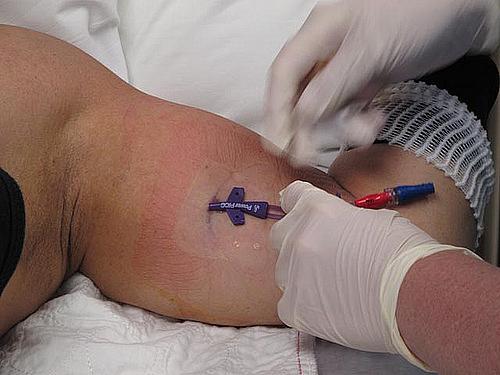Complete Health Reporting: Weighing the Risks and Benefits of Treatment

Your grandmother calls you again.
She is going ahead with the surgery and wants you to come with her to the doctor to help her understand the procedure.
Those details matter. The extent of a given treatment can have a profound impact on the patient’s short- and long-term health outcomes. Taking four painkillers every three hours for a month is very different from taking two for a week. And when a surgeon goes in to operate, the amount of tissue removed, the amount of time that a patient spends under anesthesia and a range of other factors play into how well the patient does post-operatively.
A recent study found that less surgery is best for some women with early-stage breast cancer. Here’s how Liz Szabo at USA Today described it:
The study, reported in the Journal of the American Medical Association, involved 900 women with early breast cancers who had lumpectomies and radiation, and most got drug therapy. Although the tumors were small, these cancers can spread to lymph nodes under the arm, which can allow the tumors to spread around the body through the lymph system. As a precaution, doctors usually remove some of these lymph nodes. But that surgery can be painful and lead to an incurable and sometimes disabling condition called lymphedema, which causes the arm to swell.
Would you trade a lifetime of pain and swelling in your arms for the certainty that the doctors had removed all the cancer in your lymph nodes? Maybe the trade off isn’t that simple. Here’s what the study found.
In the 445 patients who had more extensive surgery, surgeons removed a median of 17 lymph nodes. If you’re wondering, that’s a lot.
In the 446 patients who had just the “sentinel lymph nodes,” meaning the ones most closely linked to the breast cancer, surgeons removed a median of two lymph nodes. Fewer nodes means less time in surgery, etc.
If more tissue being removed always means more “certainty” about whether you will beat the disease, then you would expect that the patients who had more lymph nodes removed would live longer.
The physicians followed up for more than five years with the patients and found that the survival rates for the patients were nearly identical: 91.8% for the patients who had more nodes removed and 92.5% for the patients who had fewer nodes removed.
When you look at the confidence intervals around those estimates, you see that they completely overlap, meaning that the survival rates were basically identical.
Viewed in the most positive light, this means that 9 out of every 10 patients survived whether they had two lymph nodes removed or 17. The only difference is that those who had fewer lymph nodes removed were less likely to suffer serious side effects.
Flipped around, it means that about 1 out of every 10 died even after undergoing surgery, regardless of the extent of the surgery.
Health writers can help readers understand that less treatment sometimes makes the most sense. Oncology nurse Theresa Brown did this recently in the New York Times with a piece about a nurse who chose to avoid chemotherapy. Brown wrote:
Unfortunately, Amy’s example is an exception: too often, patients don’t always grasp the trade-offs inherent in health care choices. Our own understanding of risk-benefit may be faulty or clouded by emotion. We all want to believe the most up-to-date treatment is always the right course of clinical action; that’s the meaning, after all, of “modern medicine.” And health care providers often laud the benefits of treatment without fully discussing the risks.
If health writers discuss the trade-offs more frequently, then readers will go into their discussions with their physicians with better questions.
Have a suggestion for complete health reporting? Write me at askantidote@gmail.com or via Twitter @wheisel.
Image by Mark M. Newell via Flickr
